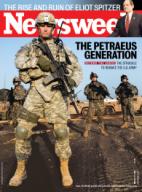Theater Military Advisory and Assistance Group (TMAAG)By Brigadier General Thomas M. Jordan (USA Ret.)
With the newly released publication of its principal operational manual, FM 3.0, the Army defined the principal conceptual underpinnings which will drive operational concepts over the next 10-15 years. The latest edition recognized the importance of understanding the complexity of the operational environment, and the nature of persistent conflict where the application of the military element of power is just one of the key ingredients necessary to achieve success. In light of this understanding, the Army adapted and raised the importance of stability operations onto an equal footing with combat operations. While the Army has made some important changes in training to implement this idea, the pending HQDA approval and resourcing decision of the Theater Military Advisory and Assistance Group (TMAAG) design and implementation strategy represents a visible and demonstrable investment in resources that reinforces the Army commitment to building partnership capacity (BPC) in an uncertain world. The proposed implementation strategy would establish one TMAAG for USARSO in FY10 (EDATE: 16 Oct 09) as proof of principle (PoP). The PoP would test the concept and make appropriate refinements as part of the overall determination to resource additional TMAAGs.
TMAAG's origin was the Army's "Unified Quest 2007" series of seminar wargames that supported the Chief of Staff of the Army's (CSA's) annual study plan. One of the resulting insights was a potential gap in the Army's ability to meet Combatant Commanders' daily operations requirements regarding theater security cooperation, military engagement, and Building Partnership Capacity (BPC). The CSA directed TRADOC, and in turn, the Combined Arms Center at Fort Leavenworth, Kansas as the lead to develop an operational concept and organizational solution to the perceived gap.
In concept, TMAAG is an Army organization under the command of the Army Service Component Commands (ASCCs). It executes specific theater security cooperation tasks or activities in support of the Geographic Combatant Commanders (GCCs) Theater Security Cooperation Plan (TSCP) during the period of Shaping Operations (Prevent/Prepare phase of Military Operations; Joint Pub 5-0). TMAAG provides the ASCC with a dedicated General Purpose Force (GPF) that operates in the lower end of the spectrum of conflict (Stable Peace and Unstable Peace) and conducts Stability Operations by providing support to governance under the operational themes of Peacetime Military Engagement and Irregular Warfare. As described in FM 3-0, the security cooperation tasks TMAAG can perform include some forms of security assistance (e.g.. training) and indirect support to foreign internal defense (FID) focused on the brigade level and below. Both security assistance and indirect support to FID emphasize increasing Host Nation (HN) military capabilities and HN self-sufficiency, thus reducing US military requirements. In other words, they assist in Building Partnership Capacity.
TMAAG-F consists of a headquarters and three Security Cooperation Detachments (SCDs). The 39-personnel headquarters provides planning and administrative support for the employment of the SCDs. It was not designed to be a rotational asset for warfighting tasks or to provide direct operational command and control over subordinate units conducting security cooperation activities in HNs. This Colonel-level headquarters receives missions from the ASCC and coordinates with the Security Assistance Office (SAO) to plan and execute GCC-specified theater security cooperation activities. Additionally, the headquarters analyzes missions and assigns subordinate teams to execute tasks within its capability and coordinates training for the team members as required.
The 22-personnel SCDs are the core of the organization. The personnel are trained in languages and cultures specified by each individual ASCC to support security cooperation training, small unit military exercise programs, and other military-to-military engagement activities with host nation military forces. The SCDs provide a limited capacity to train HN forces on command, headquarters and staff functions, as well as conventional military skills. Within the HN, training is targeted at the tactical level (Brigade and lower) and can be tailored with additional capabilities as required (Civil Affairs (CA), Psychological Operations (PSYOP), Military Police (MP), Engineers, etc). Given COCOM direction, SCDs can also assess HN training requirements and provide trainers to fill the requirement (if within their capability) or provide training to general purpose forces that are assigned security cooperation missions that are beyond TMAAG capability.
Unlike Army Special Operations Forces (ARSOF), SCDs do not have a combat advisory role. They do not train the host nation's SOF or counterterrorism units. The SCDs are seen as strictly complementary to ARSOF; they focus on the host nation's general purpose forces, allowing ARSOF to focus on the host nation SOF or counter-terrorism forces.
TMAAG demonstrates the Army's clear commitment to its role in stability operations. It provides a part of the Army solution to the BPC gap identified during the "Unified Quest 07" series of seminar wargames; but only the combined efforts of the Army, Joint, and Interagency solutions can address the full range of theater security cooperation requirements.
BG Thomas Jordan retired January 1, 2007 after serving 33 years in the United States Army as an Infantry Officer. After retiring, BG Jordan moved to Kansas to begin his new career as the Director of the Force Management Directorate (FMD), Combined Arms Center, at Ft. Leavenworth.

